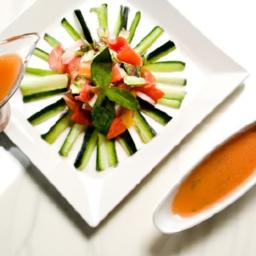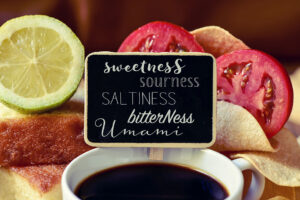Mastering the Art of Food Presentation: Elevate Every Meal
Careful food plating is about arranging dishes on a plate in a visually captivating way that enhances the overall dining experience. While many overlook this critical step, it’s crucial to remember that we feast first with our eyes. A beautifully presented plate can significantly heighten anticipation and enjoyment.
Why Presentation Matters as Much as Taste
Think about dining at a high-end restaurant: the excitement builds as your entrée is served, meticulously arranged with artistic flair. The chef’s creativity is on full display, and this moment amplifies your eagerness to taste the dish. Interestingly, exceptional plating can sometimes make a dish more memorable than flavor alone.
Guiding Principles for Stunning Plates: Remember “BUFF”
- Balance: Harmonize elements to create visual stability.
- Unity: Ensure all components feel cohesive.
- Focus: Highlight the main ingredient-usually the protein.
- Flow: Arrange items to guide the diner’s eye fluidly across the plate.
Selecting the Right Plate
Choose spacious plates: Generous plate size prevents overcrowding, allowing each ingredient’s colors and textures to stand out. In recent trends, plates 12 inches or more in diameter are popular to create intentional negative space and enhance artistry.
Stick to neutral tones: Classic white or subtle earth-colored dinnerware acts as a clean canvas that complements vibrant food colors without distraction. This approach is favored by chefs worldwide to showcase seasonal and fresh ingredients attractively.
Leveraging Fresh, Seasonal Ingredients for Visual Harmony
Using ingredients that grow together in the same season not only boosts flavor freshness but also produces a natural color palette that is pleasing to the eye. For example, spring menus might feature tender asparagus paired with young peas and radishes, creating a vibrant and harmonious plate.
Practical Layout Tips: Reinventing the Clock Method

The traditional “clock” arrangement-placing starch at 10 o’clock, protein at 2 o’clock, and vegetables at 6 o’clock-is a solid foundation for balanced plating.
Take it further by positioning the main protein as the central feature, propped atop or leaning against starch for visual elevation and prominence. This method creates depth and a natural flow from front to back.
Enhancing Plates with Sauces and Textures

Instead of pouring sauce over meat, try spooning it beneath. This keeps the protein’s crust intact and introduces an appealing circular base that contrasts textures and colors effectively.
Pro Tips for Impressive Plating
- Design before plating: Sketch your layout or assemble a trial plate to refine the visual impact.
- Prioritize simplicity and speed: Aim for elegant, uncluttered presentations. Avoid overly complex structures that delay service or appear contrived.
- Use only edible garnishes: Garnishes should complement flavors-avoid large sprigs of herbs that overshadow delicate dishes. For inspiration, see garnishing tips.
- Build outward from the center: Begin placing food in the plate’s center, moving outward to minimize accidental smudges and improve aesthetics.
- Feature your star item: Reserve the front edge for the most enticing component, drawing guest attention immediately upon serving.
- Create dimension with height: Gently mound starches like mashed potatoes or rice toward the rear, leaning vegetables or proteins against them to add gentle verticality, enhancing visual interest.
- Incorporate pops of color: Neutral-toned dishes benefit from vibrant additions like sliced green onions, a wedge of citrus, toasted sesame seeds, or a colorful microgreen, provided they match the recipe’s flavor profile.
- Serve with intention: Educate servers on correct plate orientation so each guest experiences the dish as planned.
Designing Eye-Catching Trays and Platters
- Vivid contrast is key: Avoid placing foods with similar hues adjacent to one another; separate colors for visual appeal.
- Symmetry energizes presentation: Balanced arrangements create harmony, especially on round serving trays, guiding the viewer’s gaze naturally.
- Utilize edible containers: Hollowed produce like bell peppers, tomatoes, small bread bowls, or winter squash doubles as charming vessels and reduces waste. For example, serving butternut squash stuffed with wild rice offers rustic elegance.
- Seasonal creativity: In winter, consider serving soups in hollowed pumpkins, while summer fruit salads shine in pineapple shells-functional, attractive, and eco-friendly.
Commit to Presentation Excellence Every Time
Each dish holds a choice: invest that extra care in plating to transform a meal from ordinary to memorable. Beautiful presentation reflects respect for your ingredients and your diners.
Recommended Reading to Refine Your Culinary Creativity
For those passionate about harmonizing flavors and mastering presentation techniques, two classics stand out: The Flavor Bible by Karen Page and Andrew Dornenburg, and Culinary Artistry by Andrew Dornenburg and Karen Page. These authoritative guides provide invaluable insight into flavor pairings and artistic culinary presentation.
Encouragement for Aspiring Platers
Many beginners worry they lack artistic talent to plate like top chefs such as Emeril Lagasse or Wolfgang Puck. Rest assured, you don’t need to be an artist to create exquisite plates. Observing, practicing regularly, and applying simple design principles will develop your plating skills rapidly.






2 responses to “Plating Food”
5
4